Most recurve bowstrings have a big loop at the top and a small loop at the bottom. But why is that and why do some bowstrings have two big loops? In this article, I am going to discuss these and more questions in more detail. There are a lot of misconceptions about this and there is very little information available, so it’s about time. Please read my short summary if you don’t have time to read the entire article:
Most bowstrings have a big loop for the upper limb and a small loop for the lower limb because this makes it easier to string the bow. Having two different loop sizes also makes it easier to store the bowstring on your limbs.
Although it might seem very simple, there is a lot of thought behind the size of the loops. In this article, I will first discuss why most bowstrings have a big loop on the upper limb. The next section will be about strings that have two big loops. I will also discuss whether you can reverse the loops of the string and debunk some misconceptions.
Why most bowstrings have a big and a small loop
As discussed in the intro most bowstrings have a big and a small loop. Although there are also some bowstrings with two big loops, the former is way more popular. In this section, we will discuss why.
The advantage of the small loop
When you string the bow, you fit the small loop over the tip of the bow, before you tension the bow. The advantage of the small loop is that it’s more secure than a big loop. A big loop in the string will be more likely to slip down the limbs. This might seem unlikely but when I had a string with two big loops it happened a few times. It’s especially likely to happen when your string is getting older and more flexible.
The advantage of the big loop
So if the small loop is more secure, why not make both of the loops small? Well, that would make it harder to string the bow. Normally when you string the bow, you slide the big loop along the limb. This means that both ends of the string are attached to the bow. When you tension the bow, you will only have to slide the big loop towards the end of the limb and secure it to the tip.
If you would have two small loops you can’t have on loop on the tip and on loop on the limb. This means that you have to hold one end of the string in your hand. Since you also have to manipulate the stringer, that would be very impractical and makes the entire process a bit more difficult
Additional benefit 1: easy storage
Although the reasons I discussed above are the most important, there are some additional benefits to having one big and one small loop. The first benefit is that it’s easier to store the string on the limb. When storing the limbs, most archers leave the string on one of the bow limbs. The advantage of keeping the string on the bow limb is that the string will not unwind. Since we wind the string to get a certain brace height, we would have to configure our brace height every time if we wouldn’t do so.
This is especially true for new strings that haven’t been waxed a lot. When strings get older they tend to keep their twists even if you completely remove the string. The wax on the string, in essence, acts like glue and also keeps the string from unwinding.
Since the string must stay on the limb until the archer removes it, we need a secure way to attach it. An easy way to make sure that the string stays in place is to push it down the limb. Since most limbs are getting wider closer to the riser, the string will stay in place with friction. Therefore, you first slide the big loop down and then the small loop. If both loops would be the same size you wouldn’t be able to secure them by friction, because the other string would be in the way.
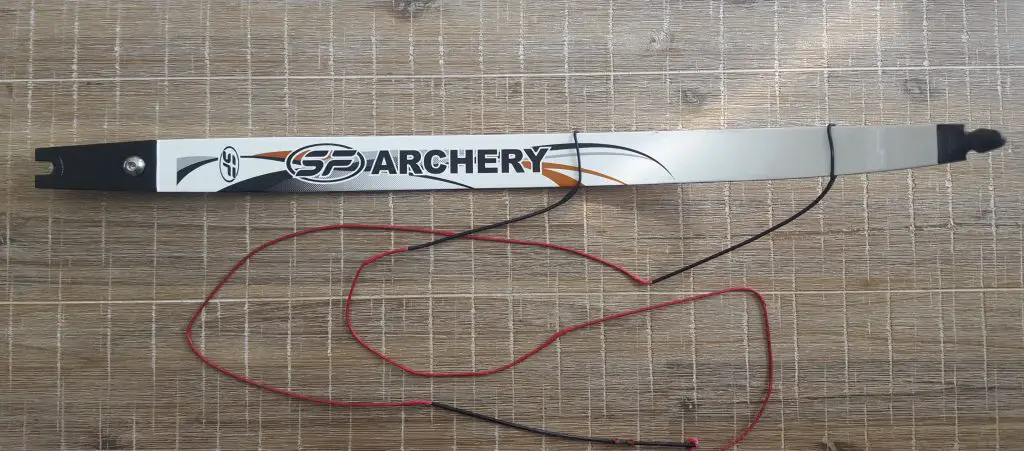
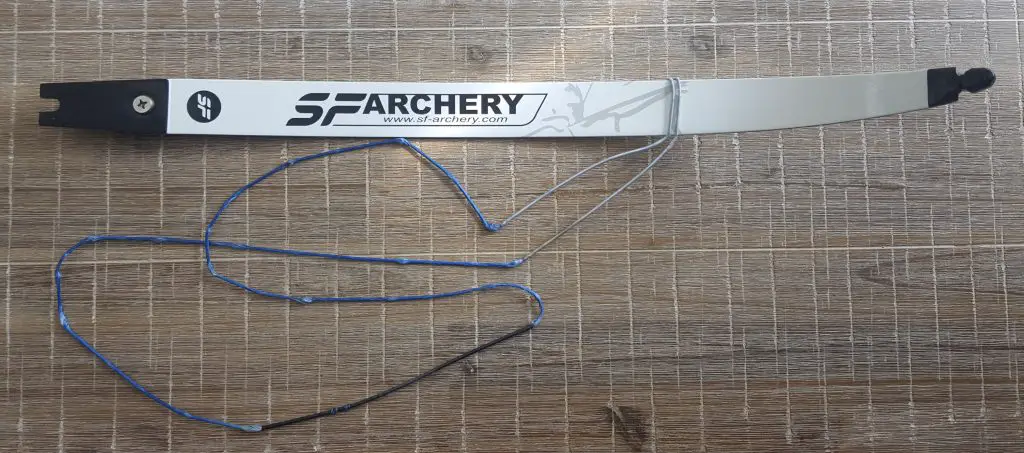
Additional benefit 2: keeping consistent
Archery is all about consistency as you most likely already know. You need to have a consistent draw, release, form and follow through. Additionally, you need to be consistent with how you store the string and limbs. Most archers have a routine and once they stick to it, they can basically get their bow ready to fire without much thinking.
This is not only easy; it also makes sure that your bow is consistently configured. As we discussed earlier if you twist the string, you change the brace height slightly. So if you store your string differently every time, you will most likely change the brace height.
Therefore your assembly and disassembly process must be in reverse. If you would turn the string in the same direction in both processes, you will add or remove one twist in the bowstring. This won’t make much of a difference when you do this for the first time. But if you repeat this 50 times, you will start to notice that something is wrong. Luckily most people do this intuitively, but if you notice that your brace height keep changing, this might be the issue
Having two different sized loops make it easier to remember how you exactly string the bow, which allows you to be more consistent. This helps you to prevent issues with your brace height.
Strings with two big loops
In the previous section, we discussed why it’s beneficial to have a smaller loop. It keeps the string more firmly in place when you are stringing your bow. If you have a string with two loops, I wouldn’t worry too much about it. Although having a smaller loop is more beneficial, I don’t think you need a completely new string just because of the big loop.
If you notice that the string keeps slipping off the tip while you string the bow, you might still want to make the loop smaller. Luckily this doesn’t mean that you need a completely new string. You can also just replace the serving, and make the loop smaller. Therefore, you need to be familiar with replacing the serving, since this is quite a process.
Luckily there is an even easier option. Although it might not look pretty, it’s very effective. You can also simply tie a knot over the existing serving to make the loop smaller. The ideal solution would be to use serving wire but it wouldn’t matter too much if it’s different wire.
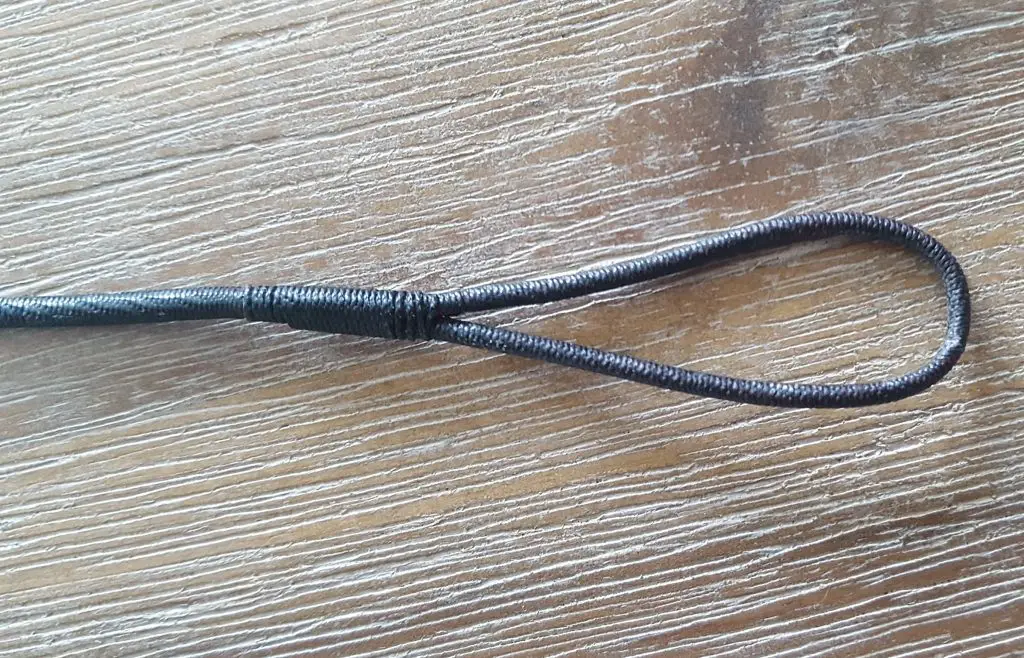
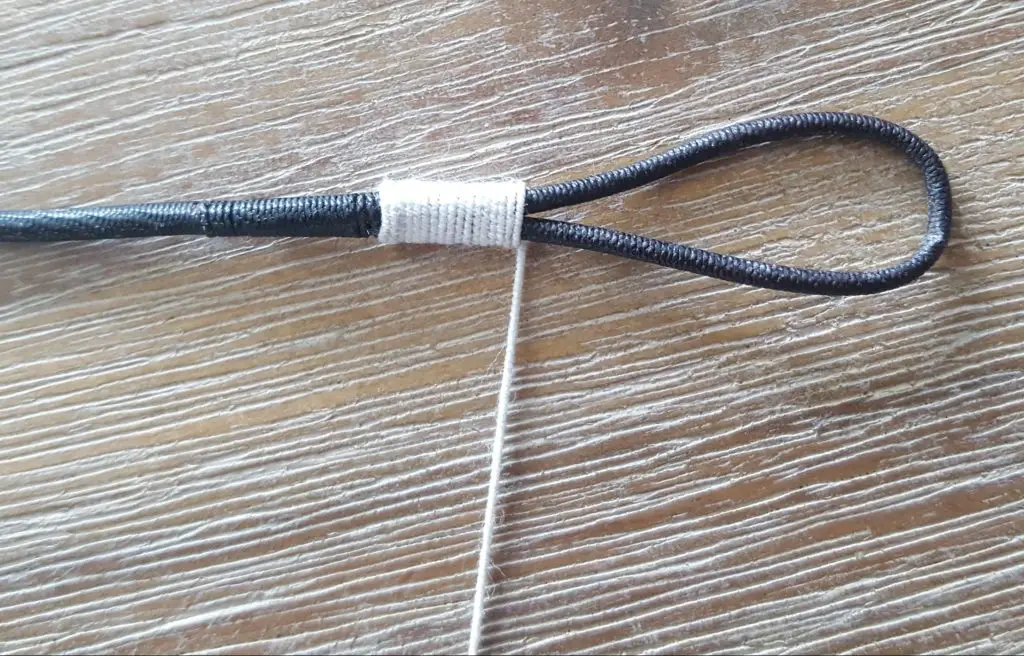
Can you also place the big loop on the bottom?
Yes having the big loop on the bottom isn’t really an issue. That the big loop is on the upper limb is mostly just a convention, but I believe there is also a good reason behind it.
When you string a bow with a saddle-type stringer, you will always put more tension on one of the limbs than on the other. Since you always put the saddle on the limb with the big loop, you always put the saddle on the top limb. Since the ‘’saddle’’ is kept in place well below the nock, it will put more direct pressure on that limb. This means that the upper limb is under more strain than the lower limb when you string the bow.
When archers tune their recurve bow, we always have to compensate for the fact that the arrow is not in the center of the bow. We do this by creating more pre-tension with the lower limb. This puts more strain on the lower limb while you are shooting. Therefore to balance the amount of strain, we put the saddle on the upper limb. Otherwise, we would only strain the lower limb, which might decrease its lifespan.
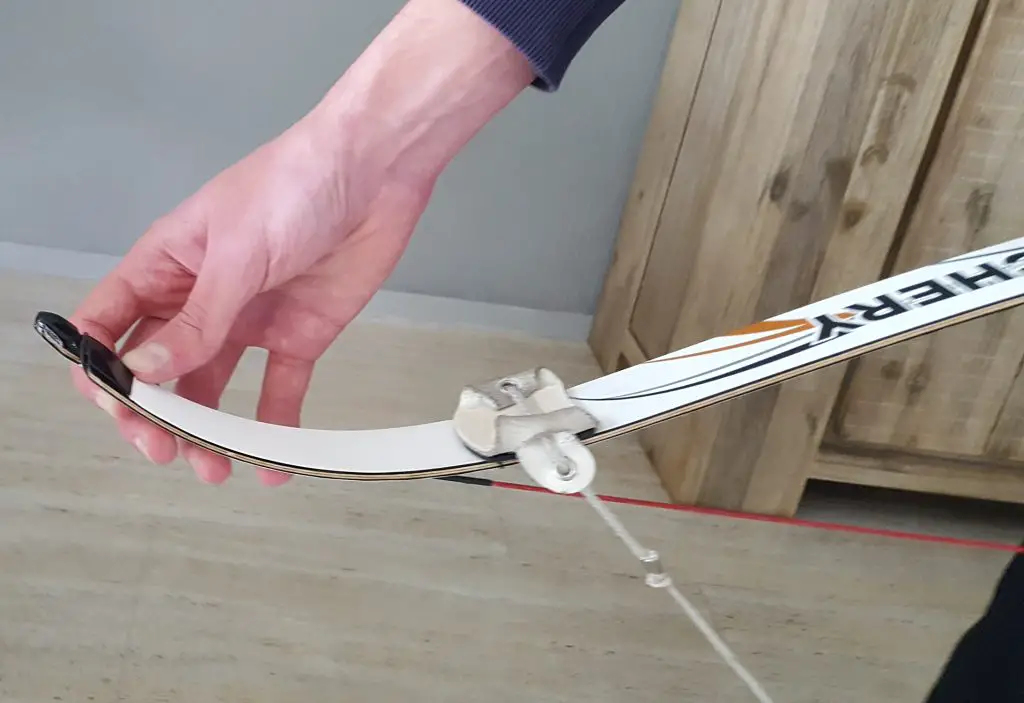
Although this is a very good reason to put the big loop on the upper limb, I don’t think you should worry if you accidentally reversed it. Having it the other way around would be better for the limbs, but modern recurve limbs tend to be very durable, so they don’t break that fast. But if you are making a string from scratch it’s better to place the big loop at the top.
Some misconceptions debunked
Like every technique and convention in archery, there are lots of misconceptions about why we put the big loop on the upper limb. Let’s discuss these misconceptions in more detail.
Large loops may slip off the limbs while shooting
In the previous section, I discussed that large loops can slip off the limbs when you string the bow. It is, however, important to know, that this may only happen when you are stringing the bow. When the bow has been strung the tension of the bow limbs will force the loops into the groves of the tip of the bow. This effectively secures the loops to the tips of the limbs. Therefore, they won’t slip out as long as you have strung the bow correctly.
When the loops of the string are not correctly placed into the grooves on the limb, the string might slip when you shoot. But this can happen regardless of whether you have large or small loops. Therefore, you should always check whether the string loops are firmly placed into the groves after you have strung the bow. You can prevent major damage by doing so.
You can’t string a bow with two small loops
Some people believe that you can’t string a bow that has two small loops. Although it’s understandable that people believe this, it isn’t true. If the loops fit over the tip of the bow, you can string it regardless of the size of the loop. When the loops are both small, you probably can’t place one the limbs while you place the other on the tip. The small loop will simply not fit far enough down the limb which prevents you to put the other loop on the tip.
But you can still string the bow, this only means that you have to keep one loop of the bow, while you place the other at the tip. This can be very impractical though, because you will have to manipulate the bow with one hand and the string with the other. Additionally, you have to make sure that you go through bow stringer and not around it. If you would go around the stringer, you can’t safely remove the stringer from the bow.
So yes, you can still string the bow with two small loops, but it will be very impractical. So if you have made a string with two small loops, I would suggest redoing the loops.
The verdict: does it even matter
If you have carefully read this article, you notice that having different-sized loops doesn’t alter the performance of your bow. Since it doesn’t add any significant weight or change the bow in any other way it doesn’t influence the arrow. Therefore having both a small and a large loop is only for convenience for storage and stringing the bow.
Because of that, I wouldn’t worry about the loop size too much. In general, I like to keep the small loop 1 inch (3 cm) and the big loop 1 ½ inch (4 cm). But some bows allow for smaller loops if the limbs are quite narrow. I wouldn’t make it to thigh though, if the loops are too small, you might run into issues. Therefore it’s better to keep your loops a bit bigger than necessary.
Tim van Rooijen
For as long as I can remember, I have always been fascinated by archery. First due to its historic significance but later because I like being outdoors. With this blog, I share my knowledge about Archery and how you can improve your shot. More about author…


